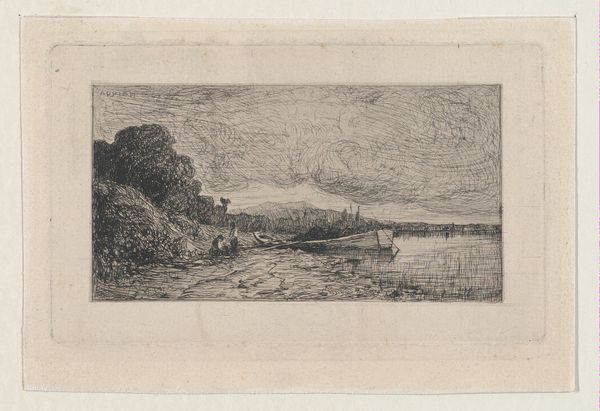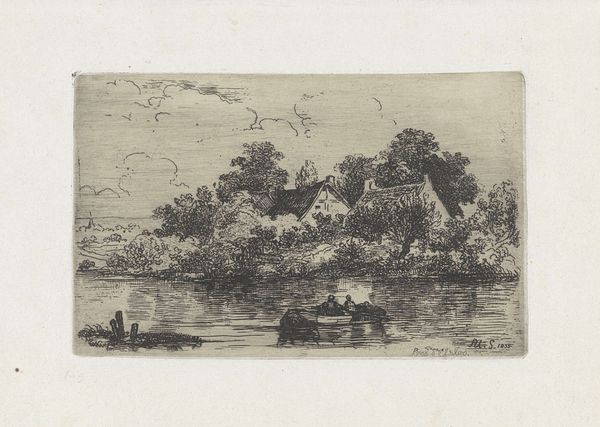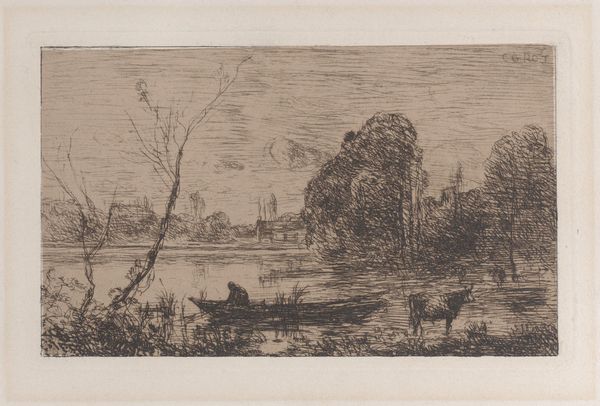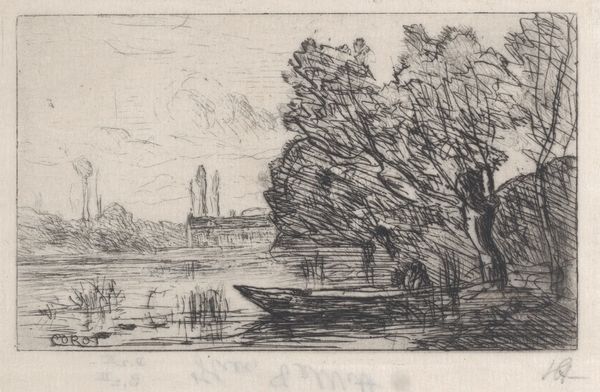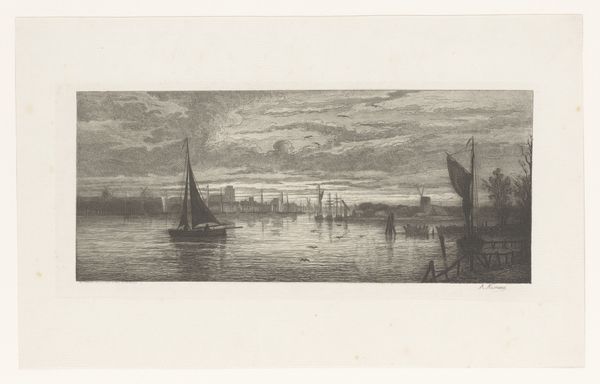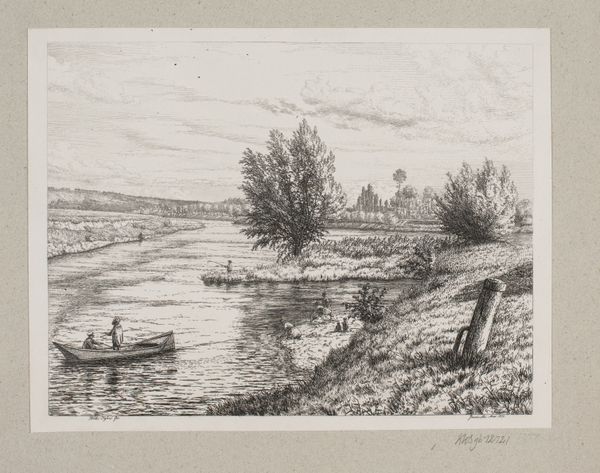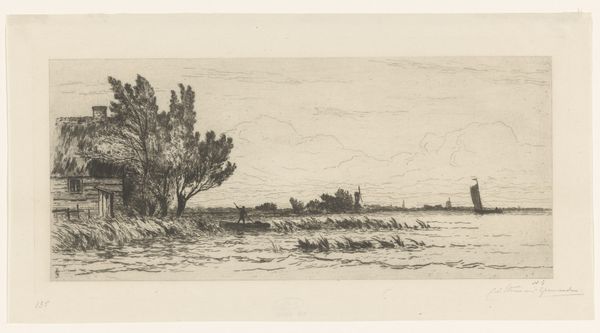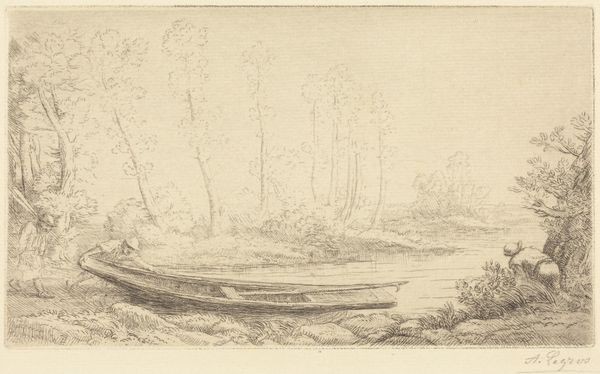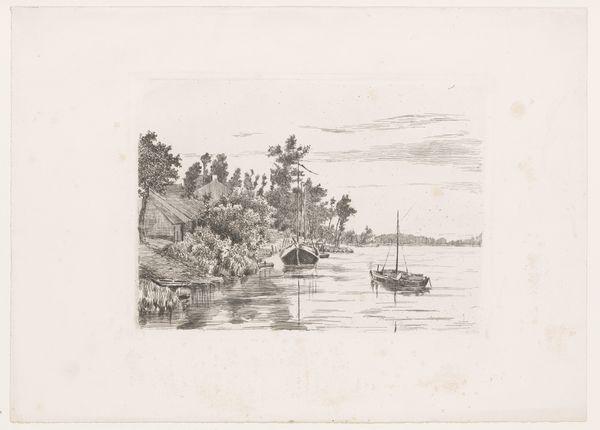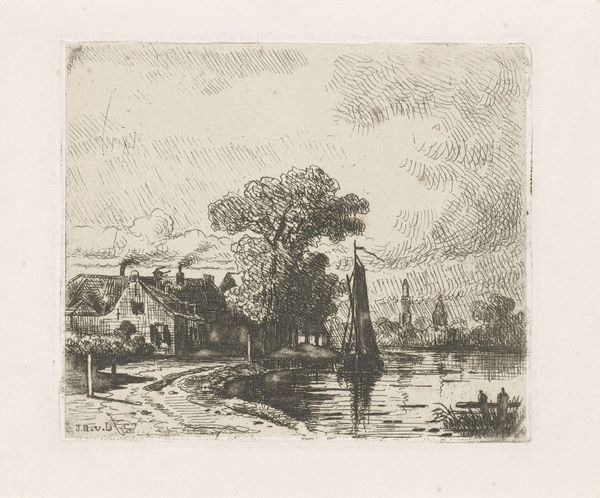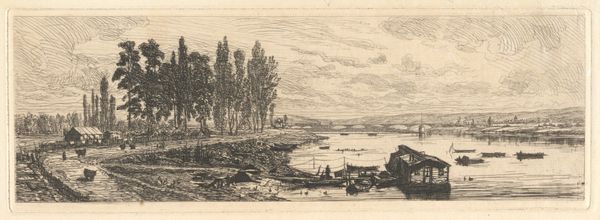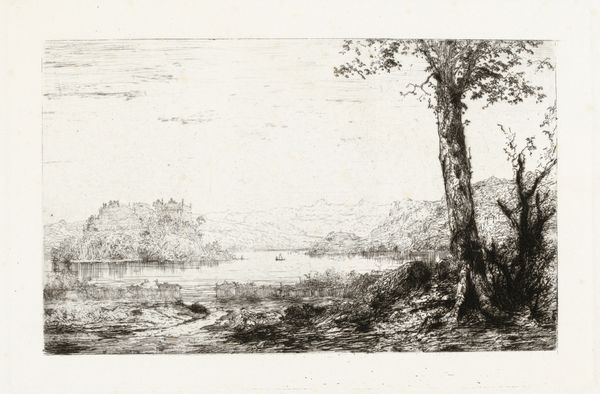
drawing, print, etching, plein-air, paper, ink
#
drawing
#
boat
# print
#
etching
#
plein-air
#
landscape
#
etching
#
paper
#
ink
Dimensions: Plate: 3 7/16 × 6 15/16 in. (8.8 × 17.7 cm) Sheet: 18 7/8 × 13 1/4 in. (48 × 33.6 cm)
Copyright: Public Domain
Curator: Just look at this wonderful, small print! Adolphe Appian created "Near the Rix (Ain)" in 1864 using etching, ink, and paper. It's currently held here at The Met. What are your first impressions? Editor: Oh, it's gorgeous. Ethereal. All that hazy, soft focus kind of makes me feel like I'm looking at a memory of a landscape more than the real thing. It’s like a place I’ve dreamed of being, very tranquil and...smoky almost, if that makes sense. Curator: It does. The smokiness evokes the fleeting nature of the plein-air, landscape tradition, and the print itself. Appian's image also taps into a kind of deep, historical well, don't you think? Boats and water have symbolized journeys, both physical and spiritual, for centuries. Editor: Absolutely. It feels almost allegorical. And look how the water is both reflective and murky; the boat’s silhouette seems to mimic the shape of the hills in the background. Is there supposed to be a person there standing on one of the boats? Curator: There is indeed. Appian includes human figures, but they remain somewhat anonymous, mere brushstrokes suggesting a presence in the landscape. But their inclusion speaks to a larger tradition in Western art, suggesting humankind's place and scale, compared to nature. What does that person evoke in you, considering its presence in a seemingly simple image of boats by the water? Editor: I wonder who they are, where they're going. They seem stuck there, pushing on with an oar, the journey interrupted. It seems bittersweet. And those little birds in the distance-- are they guiding the man or running away? The overall quietness does so much talking. Curator: Yes, the etching's beauty resides, as you say, in its restraint, encouraging contemplation on themes of transience and timelessness. It calls forth a sense of peace but also of longing, all captured through carefully modulated tones and precise lines. Editor: Exactly. I was almost going to walk past this. I'm glad we stopped. I am leaving with a new understanding, and maybe some peace for my heart. Curator: It's the quiet pieces that speak the loudest, after all.
Comments
No comments
Be the first to comment and join the conversation on the ultimate creative platform.

